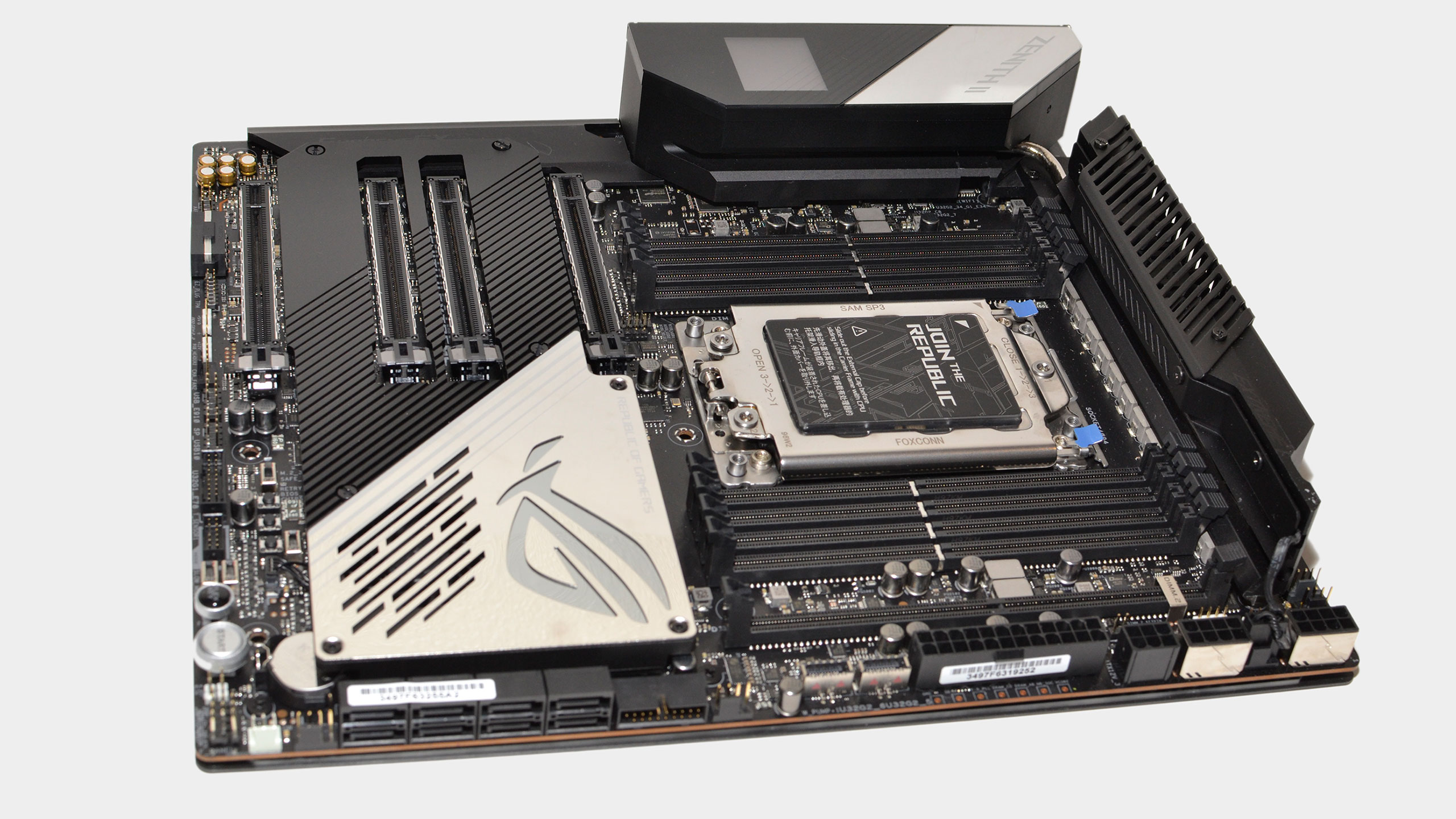AMD's next gen Threadripper Pro 7000-series chips come with up to 96 cores, and I long for consumer versions
We need a proper HEDT platform.

It's long been known that AMD is working on its Zen 4-based Ryzen Threadripper Pro lineup. It appears as though the launch is close after some benchmark results for the 32-core Threadripper Pro 7975WX and 96-core 7995WX showed up in the SiSoftware Sandra database.
The results come via @momomo_us. The system in question is a Dell Precision 7875 with two different configurations, but also interesting is that the listing shows many of both chips' specs.
The Ryzen Threadripper Pro 7995WX is a 96-core,192-thread monster of a chip with 12 x 8 core chiplets. Its boost clock is 5.14GHz with a surprisingly high 3.2GHz base clock. As we've come to expect from AMD, the cache amount is impressive, with 96 MB of L2 cache and a whopping 384 MB of L3 cache. It's all but certain the chips will support 8-channel DDR5 memory.
The Ryzen Threadripper Pro 7975WX is a little more worldly with 32-cores and 64-threads. The listing reports a strange 4.0GHz/4.0GHz clock speed, so this is probably a reporting error, though a 4.0GHz base clock looks about right. It includes 32 MB of L2 cache and 128 MB of L3 cache.

Best CPU for gaming: The top chips from Intel and AMD.
Best gaming motherboard: The right boards.
Best graphics card: Your perfect pixel-pusher awaits.
Best SSD for gaming: Get into the game ahead of the rest.
The results themselves aren't all that relevant for gaming. Let's just say they blow away their Ryzen Threadripper 5000-series equivalents. But while I'm interested in the chips themselves, the platform they run on is what will have my attention. Yes, I long for the return of a proper HEDT platform.
AMD's Socket TRX4 with the TRX40 chipset was AMD's last consumer HEDT platform. There were some very good motherboards, including the ROG Zenith II Extreme and Gigabyte TRX40 Aorus Xtreme. They were impractical for most users, but very desirable if you could make use of their capabilities.
The main reason HEDT rocks? Other than the benefits of high core counts, it's all about the PCIe lanes. Current AMD AM5 and Intel LGA 1700 platforms are limited by their low PCIe lane counts. For a gamer running a single GPU and a single SSD, it's not a problem, but if you want to add several PCIe 5.0 SSDs, a GPU running at x16, plus an expansion card or two, you're out of luck with mainstream platforms.
Keep up to date with the most important stories and the best deals, as picked by the PC Gamer team.

Now that games, operating systems and drivers are better optimized for high core count CPUs than they were at the time of Threadripper 1000, now is the time for HEDT to make a come back.
If you've got deep pockets, and you game, create, and stream all at the same time, then there's a use case for the platform. Whether we'll ever see it is another matter. Such systems will never be sold in high volume and the R&D cost would be high.
A Threadripper 7000-series system with a 32-core CPU sounds pretty good to me. Add an RTX 4090, two or three PCIe 5.0 x4 SSDs, a sound card, 10G LAN, WiFi 7, and USB4 all running at full speed without compromise, and I'd be a happy gamer. Albeit a poor one after dropping the cash on that lot.
As for whether we'll ever see the return of consumer level HEDT, I guess I'll have to keep dreaming.

Chris' gaming experiences go back to the mid-nineties when he conned his parents into buying an 'educational PC' that was conveniently overpowered to play Doom and Tie Fighter. He developed a love of extreme overclocking that destroyed his savings despite the cheaper hardware on offer via his job at a PC store. To afford more LN2 he began moonlighting as a reviewer for VR-Zone before jumping the fence to work for MSI Australia. Since then, he's gone back to journalism, enthusiastically reviewing the latest and greatest components for PC & Tech Authority, PC Powerplay and currently Australian Personal Computer magazine and PC Gamer. Chris still puts far too many hours into Borderlands 3, always striving to become a more efficient killer.

